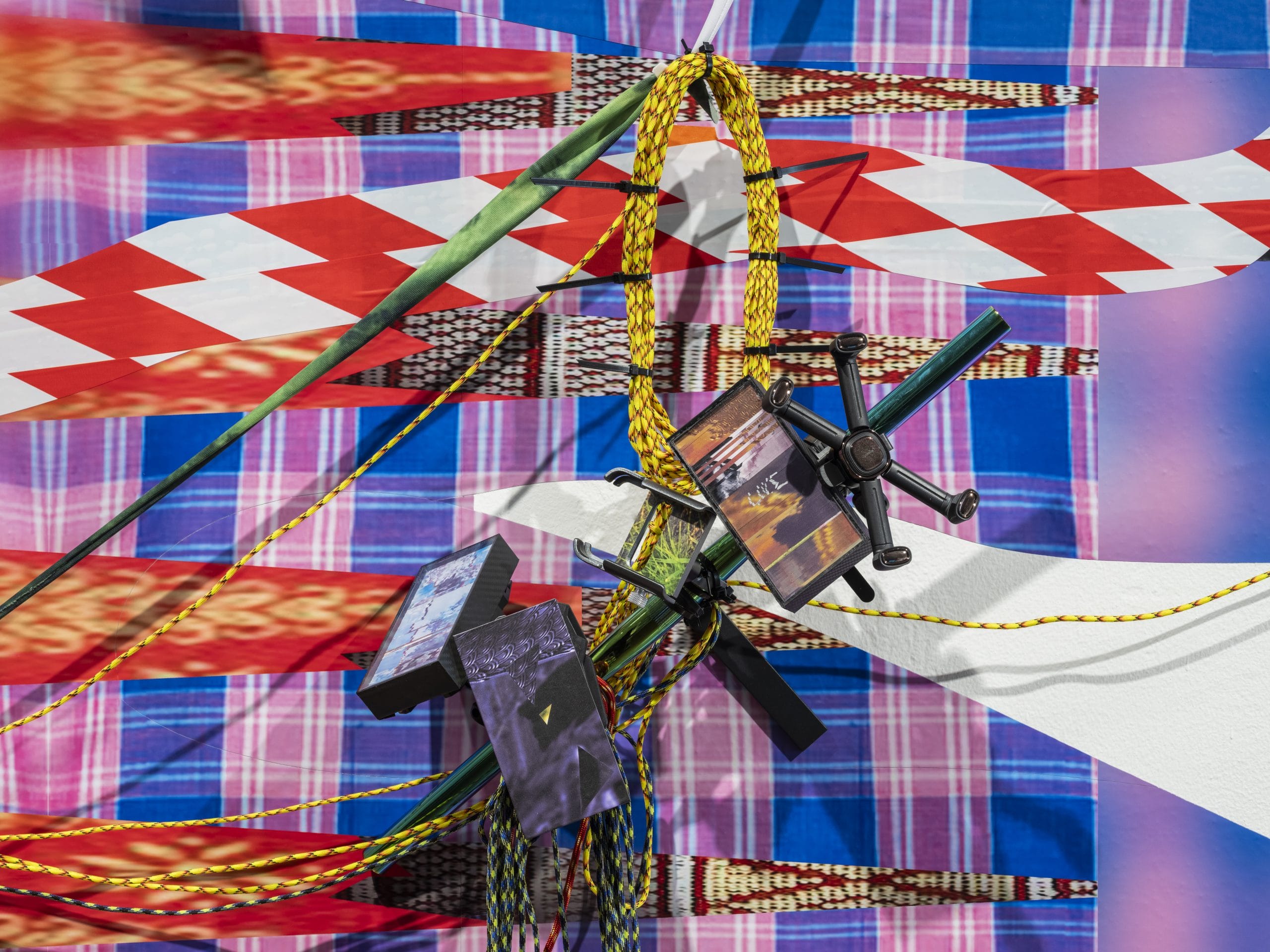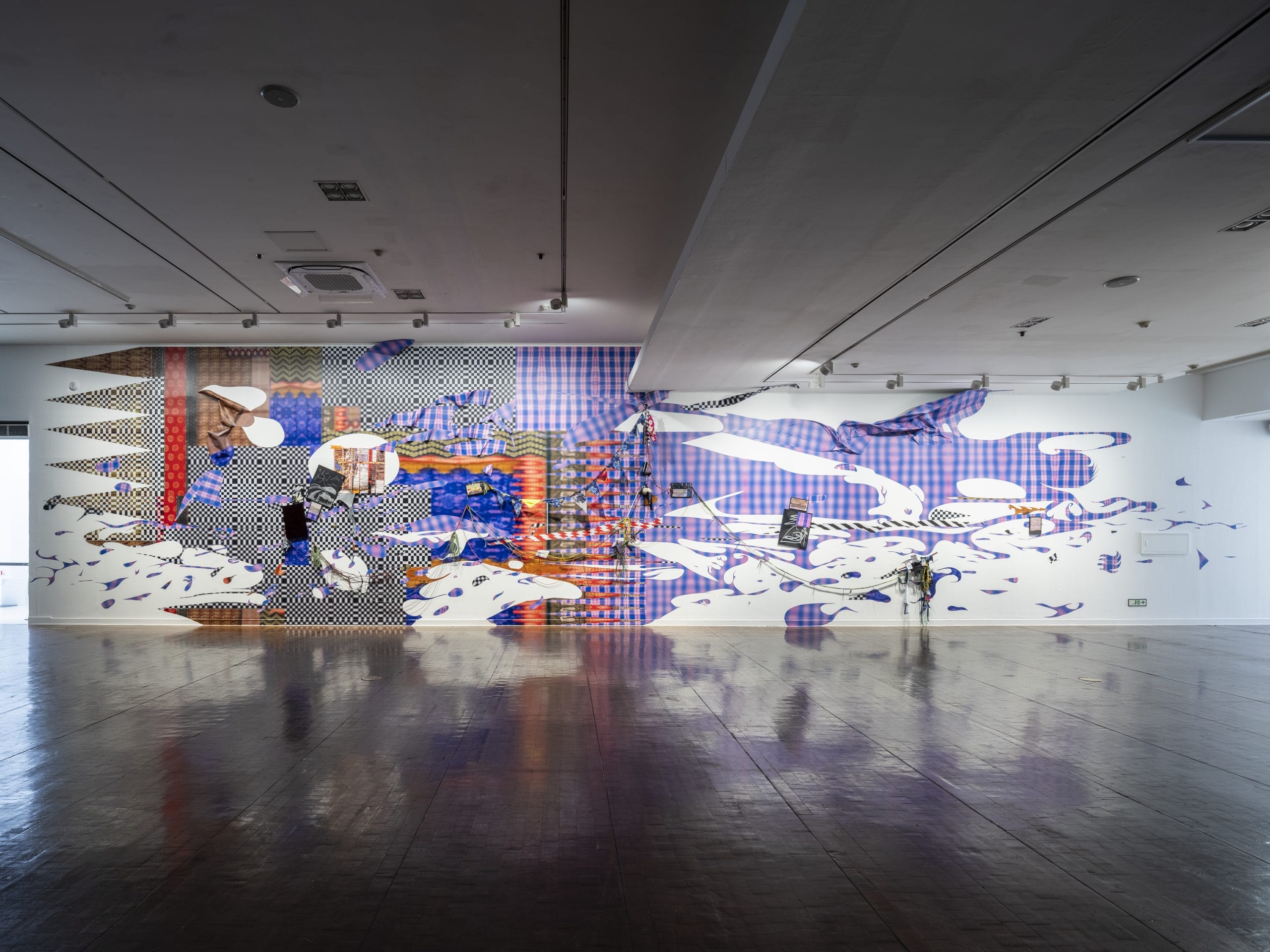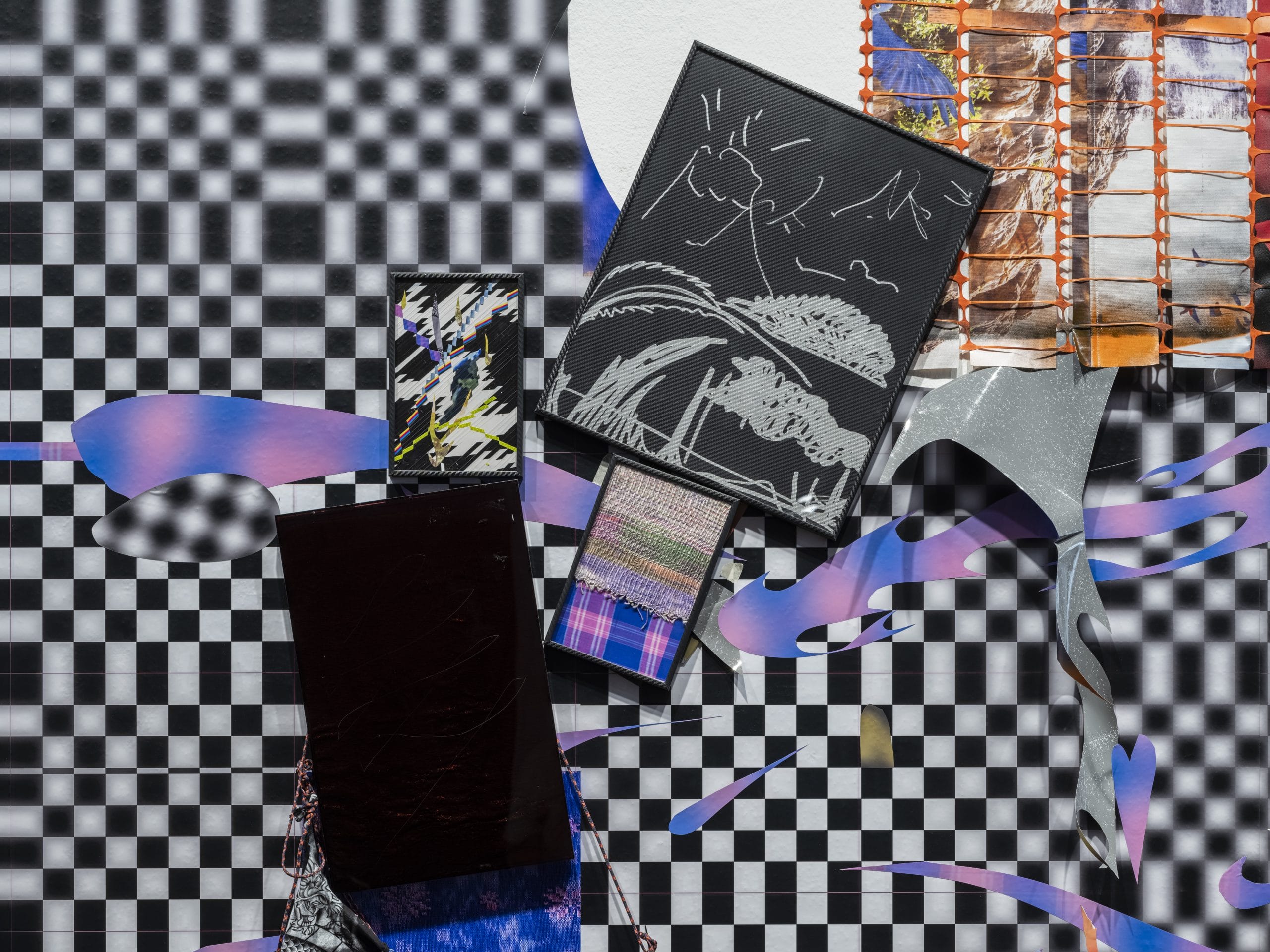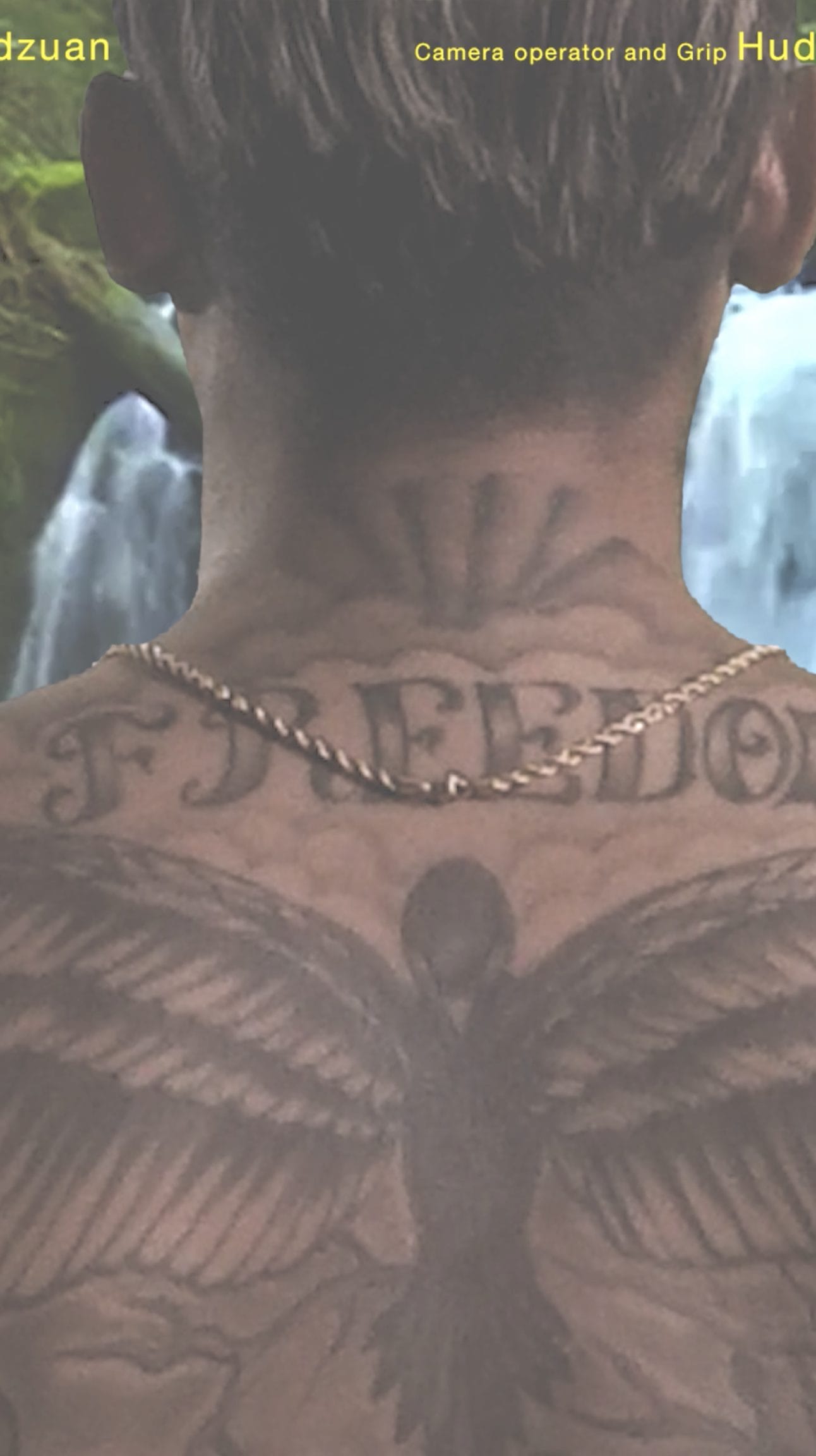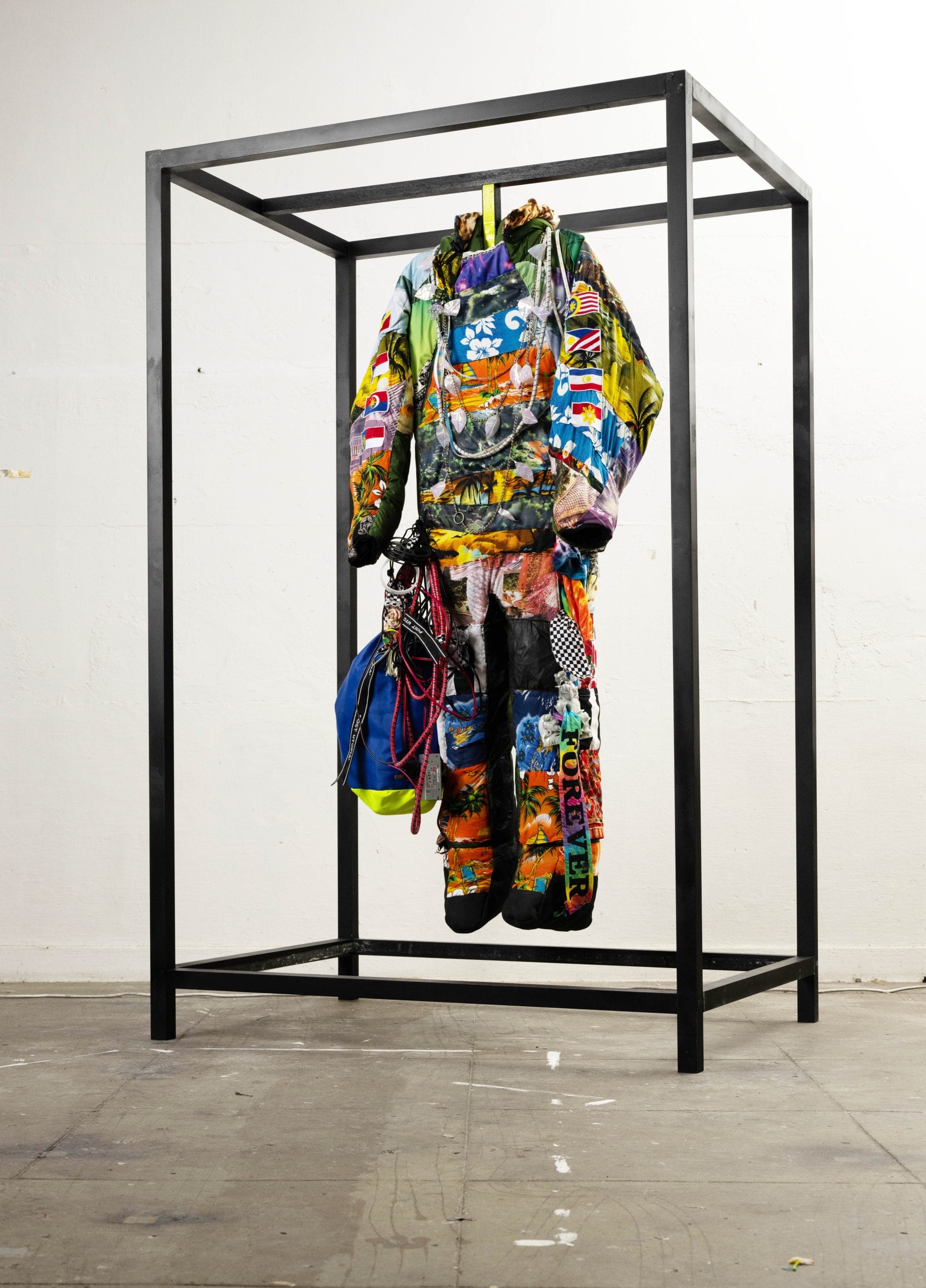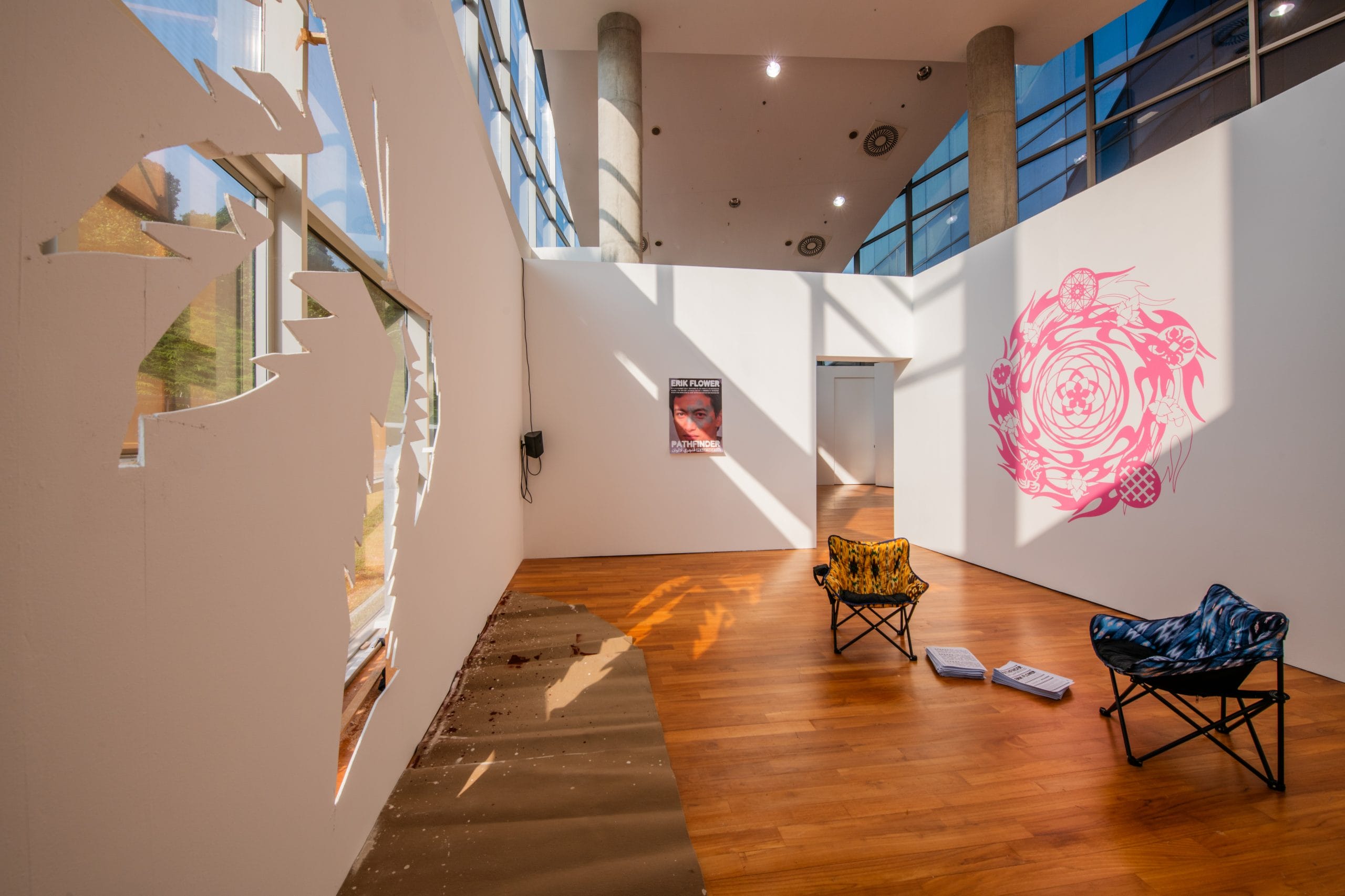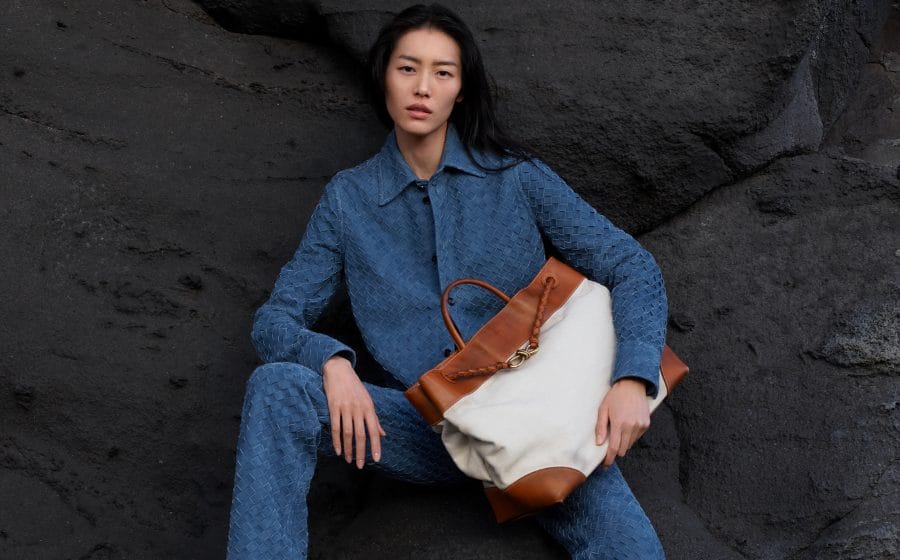
In Darma’s coded lexicon, his extensive visual vocabulary of archival material, the Internet and literary references, a fusion of archival treasures, online landscapes, and literary inspirations reveals modern introspection.
In our ever-changing world, discussions about history and preservation in the face of our rapidly changing digital landscape have faded into the distance. Singaporean artist Fyerool Darma, however, emerges as a beacon of relentless curiosity. A painter by training, he combines sound, video, new media, sculpture, texts, and craft practises to create images that juxtapose modernism with Southeast Asian cultures, histories, and politics. His works, which at times resemble cyphers, compel us to decode their complexities. Profound philosophical queries concerning time, history, language, and perception are not just idle speculations in Darma’s visually fragmented artworks — instead, they lead to a greater understanding of our ever-shifting reality.
The poetic subtlety that envelops Darma’s creations is like a puzzle. Within every coded language, each chosen material, and every fragmented visual lies a vital piece contributing to the unveiling of the final artwork — like decoding the hieroglyphics. Attuned to the multifaceted meanings of art and history, his works connect disparate ideas like a Venn diagram, where divergent thoughts intersect.
Even at the height of our intelligence, there are inherent limits to our knowledge. Yet, a connection exists between our identity and the world around us. The liminality between words and the space between the artist and their works might signify deeper aspects of our consciousness, historical context, and the essence of art.
Nothing is ever set in stone — everything is always changing and evolving, and we can learn to adapt to the remixes of our histories and present, as Darma makes clear in his works.
You’ve ventured into the archives, unearthing remnants of the past and reimagining them in your art. Why this fascination with the archives, and how do you navigate the balance between preserving historical essence and creating something entirely new?
I don’t see the archive as a venture, nor as a remnant of the past, but rather a synth that either synchronises or synthesises with time, or is discordant — it is a durée of commitment with the present-to converse, correspond, ask and be in constant suspicion of with the hereafter. How does one maintain a ‘preservation of historical essence’ amidst the constant changes of the uncontrollable climate and the speed of digital change? Or the complex context and conditions we are in? Where and what were the conditions did these materials arrived, get recorded or collected? What things get to stay within that inventory? What stories gets to be shared and what gets hidden or ignored? There are moments of synthesis as it transitions into an inventory — a commitment need not be on display as well — an interrogation of it is imagined but the shift of adaptations and interpretations — its provenances that came with it, the assumptions and its misreadings. This is where the synthesis happens.
As for now, I am uncertain if the residues of the exercises I make turns to a ‘new’. It is a proposal of a possibility, informed by many works beyond just the archive, beyond just art as well.
Your use of leet (the substitution of a word’s letters with numbers and special characters) in the titles of your artworks titles seem to hint at our digital personas. How does this coded language serve as a lens through which viewers can perceive your art? Are there nuances and hidden meanings to uncover?
Like any pantoum that waits to be read, a leet is employed in this context in a similar way. On the other hand, I’m interested in displaying their potential as how you put it beautifully too-person/s, persona/s-a mask-keyframe-filter-stickers-#nofilter/.
How are the inanimate beings animated amidst our simulacrum? Perhaps they were already living and their animateness is just a hallucination of ours? They are just pogo-ing, sidestepping, zapin-ing quietly in a corner. Meanings are synthesis of nuances and potentialities, interpretations, adaptations and misreadings. Are leets then not words to communicate amidst our present? I like that it opens a potential crevice into this.
How did your vast visual language come to be?
Through listening to the reverbs left by the minimocursor phunoiensis, the coelacanthe, 🪳🪲🪰🕷️🐙🐀🦖🦕🦑 and seeing time degenerate and regenerate it. Taking time in understanding the vulnerability and malleability of words and its misreadings — it went into spaces of dormancy, disjunctures, and 🏁🏳️🏴🏴☠️🚩 see it all 🕸️🎼🪢. If I am a data body that goes into syncopations of glitches as what Dr. Karin G. Oen mentioned, perhaps an exit from it is impossibly possible through these languages? I learnt to dance within and with time — relearning how to sit with it only recently as well.
Being deeply rooted in Southeast Asian culture, your art involves extracting and remixing materials from your surroundings. What transformative conversations do you hope your art instigates, particularly concerning Singapore’s historiography and its political complexities? How can art reshape our understanding of history and its implications?
What transformative conversations do you hope your art instigates, particularly concerning Singapore’s historiography and its political complexities? How can art reshape our understanding of history and its implications?
What is Singapore’s historiography? What is historiography? Histories are always linear, bias and filial. Within this moment, it’s incomplete and there are still friends, acquaintances, and readers, like you and I who are still talking, writing, laughing and deliberating to its historicity. Can we be considered as a distant corroborator? Despite the distance in proximity of geography, locales, differences and time?
There’s an enigmatic quality to your art—it simultaneously reveals and conceals, leaving room for interpretation. How would you advise someone unfamiliar with your work to approach and dissect it? What nuances and layers should they be attentive to?
Thank you for the kind words. They are as-is, as it is with a pantoum, as how you beautifully put it, a membrane awaiting to be dissected—a scar awaiting to be healed—a micropolymer awaiting for decomposition and re-synthesis — it is as it is. It is flat, dumb, layered, dense, a void with a spectrum of substances awaiting to be read. As for nuances and layers—perhaps we could break it down to #keywords like #images #nonlinear #filter #SGKIA #sgmuseummemes #goje #hancaitown …
You have a handful of collaborators, particular with the artwork, L4NDF33LZZ. What are the specific qualities or energy you look for in potential collaborators before embarking on a project together?
This is something I don’t know—rahsia is not magic. Or maybe? There is always an admiration of their talent first and understanding the circumstances of their motivation to make art in any forms.
Wardah taught me of discipline, Dahlia taught me to play, they taught me of rizz and to live, be human. Aleezon taught me to give time to details and the stitches, rawanXberdenyut taught me to listen to poetry and mosh or spit at it, Taufiq Rahman taught me to look deeper into an image to understand its complexities, and Lé Luhur taught me to stay still and do nothing. Jalee constantly teaches me to give care even when vectoring a digital work.
Your use of materials like vinyls, expose resin, non metalized reflective tape (to name) in your artworks creates a fascinating interplay of textures when one sees them up close, especially in Total Output at Singapore Art Museum. I imagine that a lot of research has gone into the materials itself, are there any particular narratives associated with them?
There are many stories. One in particular looks into the failed Malayan Textile Mill and its textured looms. It told us of strikes and workers inequality — a reverb — another is of a city’s aspiration towards the gentrifying of its l🔥nd$c🌹pe to a UHD (Ultra High Definition) screen of #luxe of varnished surfaces despite the IHT (Intense High Temperature). Are these causes to our disjunctures? At what costs? Are we dislocated from the soil? Perhaps the soil had already given up on us? Perhaps we are the ‘hyper productive citizen’. The ocean and our friendship with artificiality came with the programming of efficiency. To whose benefit? It was interesting to witness, read, listen and understand the shift of how productivity was aspired and later made as a template of measurement and as a programmed mode of survival. Today, we run on autopilot mode, perhaps the cyborg body is relearning how to dance in a symphony of eccentric playlist?
Was there an instance where a specific material challenged your artistic boundaries?
All of them. They interrogate me to read them deeper. To listen and feel their textured processes, the logistics and inventories they went through to the moment we touch them.
Music appears to be a significant influence on your art, with your admiration for Jonathan Kusama, Burial and Sun Ra to name. Does music help with the composition of your works?
There is also an admiration with the works of Erik Flower, TentangLangit, Jose Maceda, Kasimyn, Zameera, Yogi B, Dato’ Maw, LilAsianThiccie and Soytiet. Amongst the individuals mentioned, I learned to sit while listening, and rehabilitate the body to move with it. They do and they don’t, but they teach me to listen attentively, listen more and embrace interruptions. A friend told me how interruptions are mistakes, and mistakes are generative. I am still figuring this one out, but I like it. It is not aporia as a state of the head but rather a potential grid to reset into.
Once you’re done with this story, click here to catch up with our November 2023 issue.

